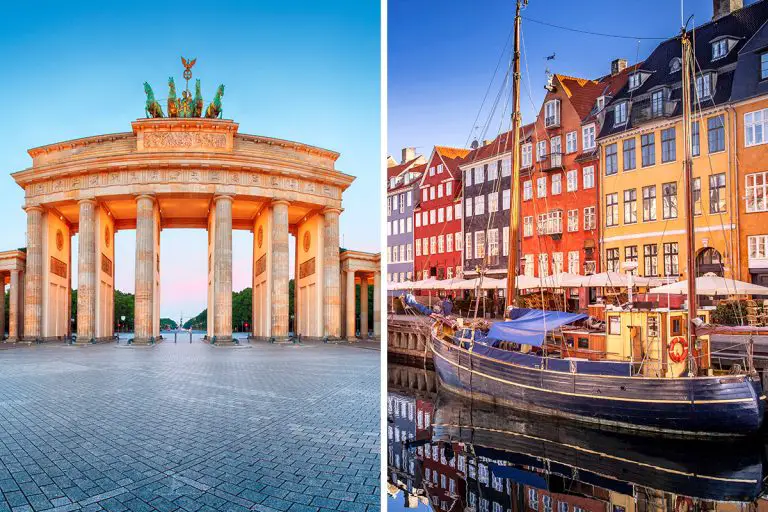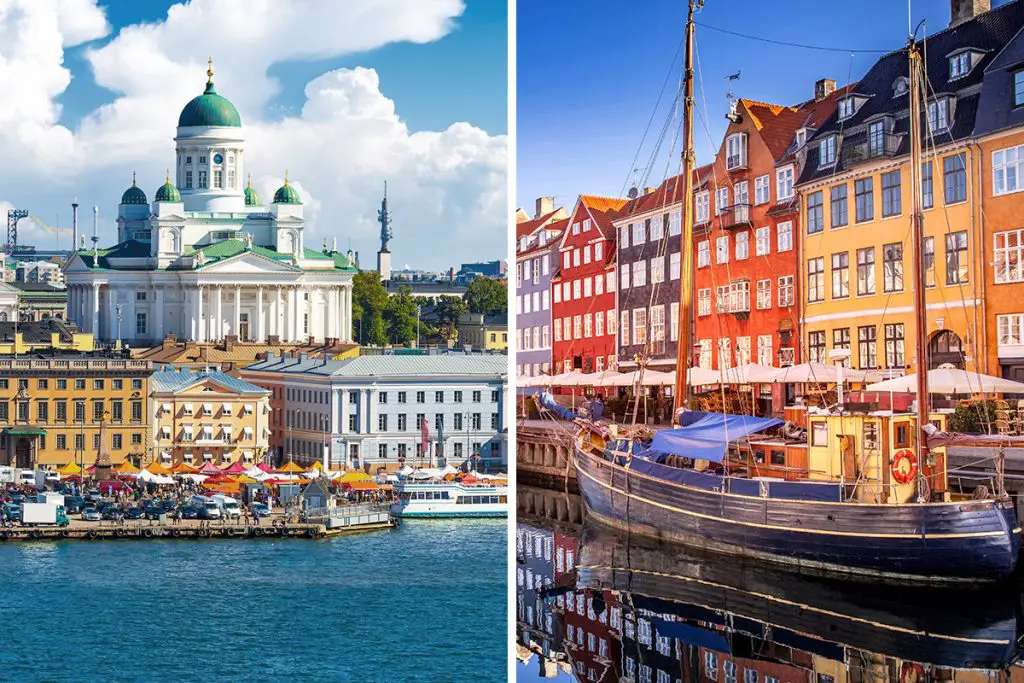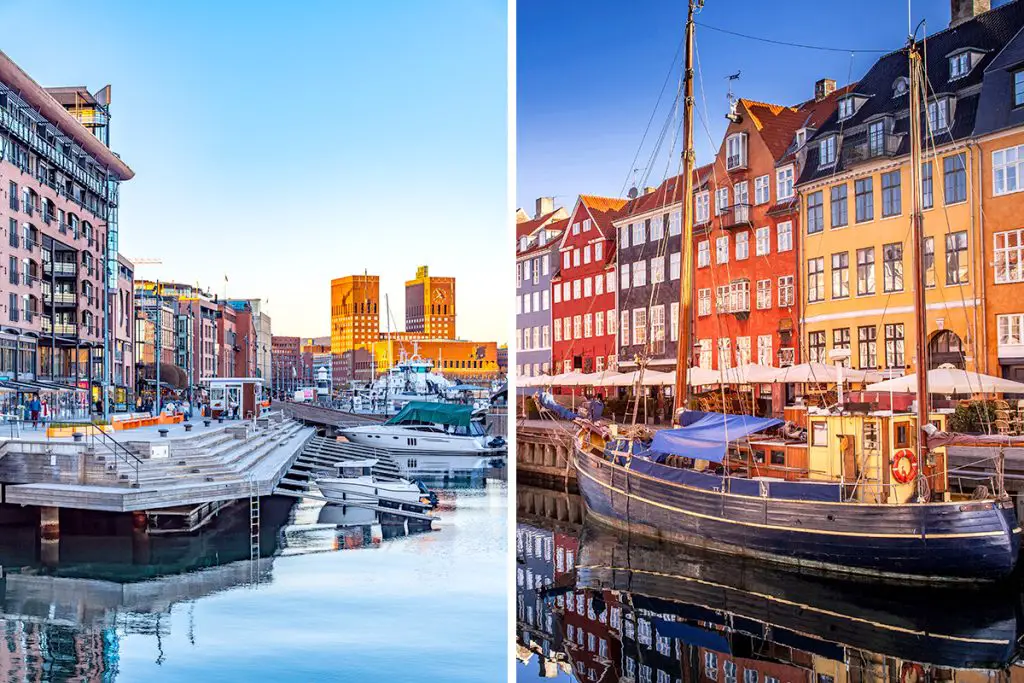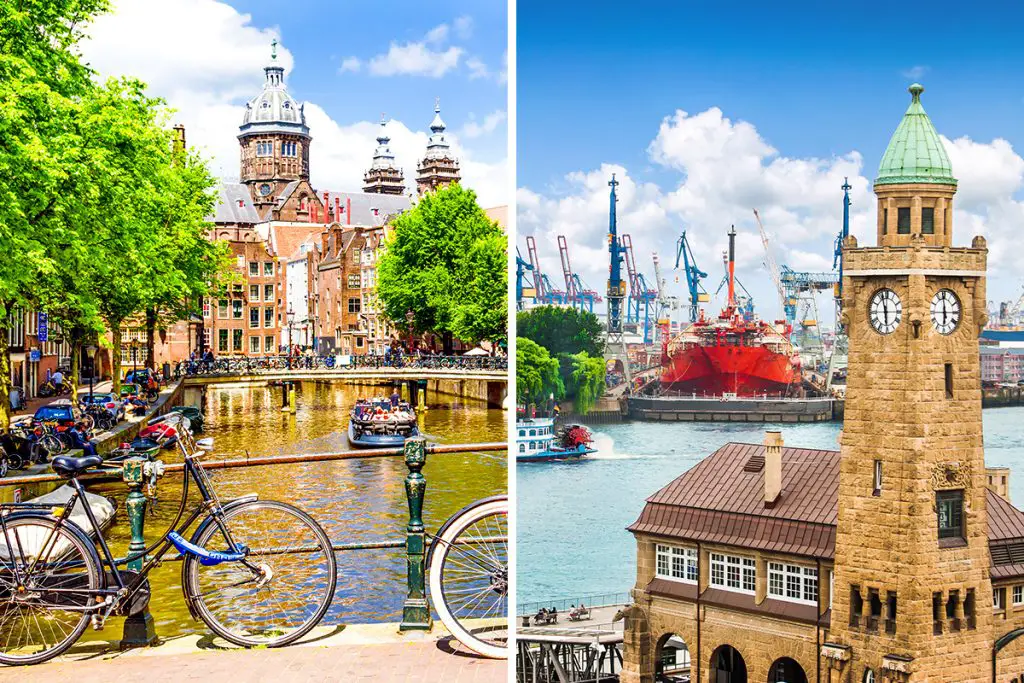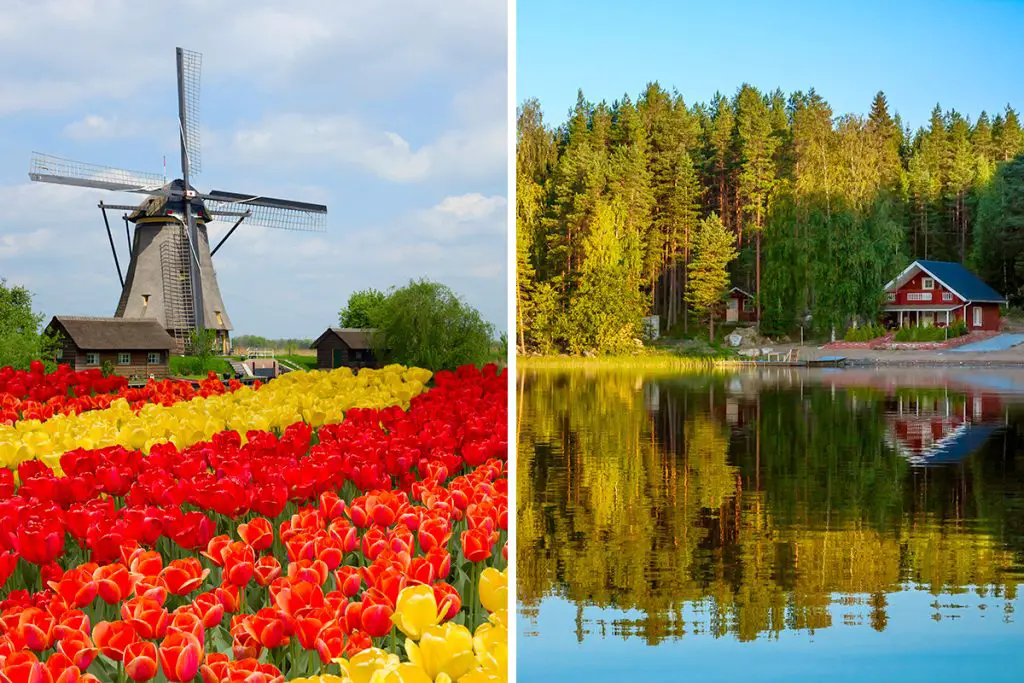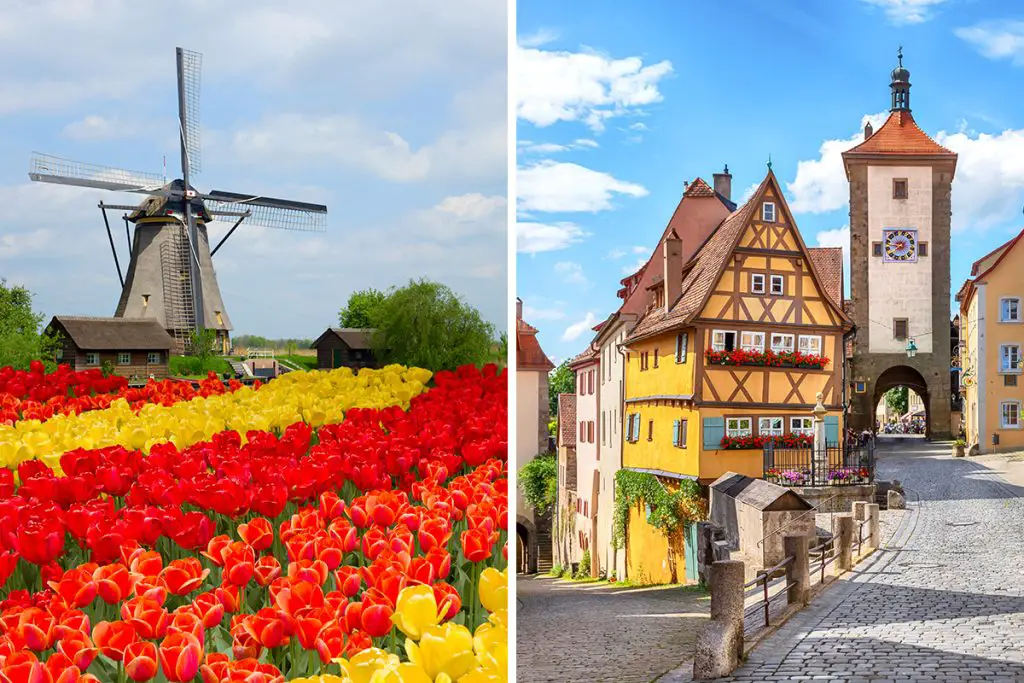Each step you take in Berlin or Copenhagen uncovers a new piece of history. In both cities, tradition and innovation intersect to create a unique experience. To fully appreciate what these cities have to offer, you need to explore their histories and cultures. Dive in, let’s unravel the rich tapestry that makes up these two exciting destinations.
History & Culture
When talking about history and culture, both Berlin and Copenhagen stand as fascinating examples. They carry tales from the past and present that shape the unique character of each city.
Berlin’s history is deeply etched in its streets, a constant reminder of a past that has seen both triumphs and tragedies. Its rich culture is a blend of the old and new, where centuries-old buildings stand tall alongside modern skyscrapers. Berlin breathes history. Walking through its streets, you can almost hear whispers of the past, making your trip a truly immersive historical experience.
Copenhagen’s history, on the other hand, is of a more peaceful nature. As one of the oldest kingdoms in the world, Denmark’s capital city carries a regal air. Beautifully preserved architecture provides a glimpse into its royal past.
Copenhagen’s culture is characterized by a warm, inviting atmosphere. The Danish concept of ‘hygge’, which refers to a sense of coziness and comfort, permeates throughout the city.
Both cities offer a wealth of historical and cultural experiences. In Berlin, history is often a solemn reflection of its turbulent past, but it’s also a celebration of its resilience. The city’s culture is vibrant and dynamic, reflective of its evolution over time.
Copenhagen’s history paints a portrait of a regal past, while its culture is encapsulated in the Danish tradition of ‘hygge’, promoting a relaxed and comfortable atmosphere.
In conclusion, both Berlin and Copenhagen offer rich historical and cultural experiences, albeit with distinct characters. Whether you’re drawn to Berlin’s dynamic evolution or Copenhagen’s cozy charm, each city holds unique treasures waiting to be discovered. Which one calls to you more strongly?
Attractions & Activities
When you step into Berlin or Copenhagen, you’re stepping into a world brimming with attractions and activities. From breathtaking architectural feats to invigorating outdoor adventures, both cities promise unforgettable experiences.
In Berlin, you can explore a variety of museums, galleries, and monuments that carry stories of the city’s past. One must-visit site is the Berlin Wall Memorial, where you can learn about a significant part of Berlin’s history.
If you’re an art enthusiast, Museum Island is a treasure trove housing five museums filled with fascinating collections. For those seeking active adventures, Tiergarten, the city’s largest park, offers lovely paths for cycling and jogging.
Copenhagen has a rich assortment of attractions and activities as well. Historical landmarks such as the Little Mermaid statue and the magnificent Amalienborg Palace are top on the list for visitors.
For museum lovers, the National Museum of Denmark is a must-visit. Meanwhile, outdoor enthusiasts can enjoy a leisurely bike ride around the city or take a scenic boat tour through the canals.
Berlin’s attractions offer a deep dive into its historic past, balanced with green spaces for outdoor activities. In contrast, Copenhagen’s landmarks blend history and art, offering a wide range of indoor and outdoor activities that keep you engaged with its vibrant atmosphere.
In summary, both cities boast a mix of attractions and activities that cater to various interests. Whether it’s immersing yourself in history and art in Berlin, or exploring Copenhagen’s landmarks and canals, your trip will be filled with enriching experiences.
Beaches
When it comes to beaches, Berlin and Copenhagen present contrasting offerings. While Berlin might not be your typical beach destination, it does have some charming options. On the other hand, Copenhagen, with its coastal location, gives you a variety of beach experiences.
Berlin is home to several man-made beaches along the Spree River, offering a unique urban beach experience. Strandbar Mitte, about 1.2 miles (or about 2 kilometers) from the city center, is a popular spot to relax and enjoy a sunny day.
In contrast, Plötzensee, approximately 5 miles (or about 8 kilometers) from the city center, is a lake with a sandy beach where you can soak in the sun and take a refreshing dip.
Copenhagen offers a different beach experience, with several beautiful coastal beaches to its name. Bellevue Beach, located about 6.2 miles (or about 10 kilometers) north of Copenhagen, is a popular spot for both locals and tourists. Another beach, Amager Strandpark, is a man-made island and beach area situated roughly 4.3 miles (or about 7 kilometers) from the city center.
While Berlin’s river and lake beaches offer a distinctive city beach experience, Copenhagen’s coastal beaches provide a more traditional seaside atmosphere. Regardless of your preference, both cities offer a chance to unwind and enjoy the outdoors in their unique ways.
In conclusion, whether you’re looking for a unique urban beach experience in Berlin or a traditional coastal experience in Copenhagen, both cities can offer a refreshing break from your city exploration. But remember, the best beach is the one that matches your ideal day by the water. Which city’s beach experience do you think you would enjoy more?
Eating, Drinking & Nightlife
A city’s food, drink, and nightlife scene is the heartbeat that keeps it vibrant and lively. Berlin and Copenhagen, in this respect, are no different, with each offering a unique blend of experiences to tantalize your taste buds and keep your evenings vibrant.
Berlin’s food scene is as diverse as the city itself. You can find everything from hearty traditional German dishes to a wide array of international cuisine. Don’t miss out on the famous Berliner Currywurst or a comforting bowl of Eintopf, a type of German stew.
In Copenhagen, the dining experience is all about simplicity and freshness. Renowned for its New Nordic cuisine, you’ll find dishes prepared with locally-sourced, seasonal ingredients. And of course, a trip to Copenhagen isn’t complete without trying Smørrebrød, the traditional Danish open-faced sandwich.
When it comes to drinks, Berlin is famous for its beer. The city has numerous breweries where you can taste a variety of German beers. Conversely, Copenhagen is known for its craft cocktails and Danish beers, with many bars offering a cozy and stylish atmosphere to enjoy a drink.
Berlin’s nightlife is legendary, with a mix of nightclubs, live music venues, and cozy bars. It’s a city that truly never sleeps. On the other hand, Copenhagen’s nightlife may be more low-key, but it’s no less enjoyable, with trendy bars, late-night cafes, and nightclubs where you can dance the night away.
In summary, whether it’s the diverse culinary offerings and energetic nightlife of Berlin, or the fresh, simple cuisine and relaxed nightlife of Copenhagen, there’s a world of experiences waiting for you after sunset. Which city’s nightlife vibe matches your style?
Shopping
Shopping is often an exciting part of any city visit, offering a chance to discover unique local products, explore bustling markets, and even pick up a few souvenirs. Berlin and Copenhagen offer distinct shopping experiences that cater to a variety of tastes and budgets.
Berlin’s shopping scene is a mixture of chic designer boutiques, vintage shops, and large department stores. Kurfürstendamm, known as “Ku’damm”, is the city’s most famous shopping street, where you’ll find a range of high-end stores. For those into vintage and secondhand items, the Mauerpark Flea Market is a treasure trove of unique finds.
In contrast, Copenhagen is renowned for its minimalist design and high-quality craftsmanship. Strøget, one of the longest pedestrian shopping streets in Europe, is lined with both international and Danish brands. For design enthusiasts, the district of Frederiksberg is a must-visit, with many stores selling Danish-designed homewares and furniture.
In essence, shopping in Berlin offers a blend of high fashion, vintage items, and everything in between, reflecting the city’s eclectic personality. Copenhagen, on the other hand, showcases its love for minimalist design and quality craftsmanship. So, which city’s shopping scene excites you more?
Accommodation
Finding a comfortable place to stay is an essential part of any travel experience. Berlin and Copenhagen both offer a range of accommodations to suit every traveler’s needs, from budget to luxury, traditional to modern.
Berlin’s accommodations reflect the city’s diversity. You’ll find luxury hotels in Charlottenburg, an area known for its posh boutiques and eateries. If you’re looking for something more budget-friendly, the Kreuzberg neighborhood offers affordable hostels and guesthouses.
And for a truly unique stay, consider one of the city’s many boutique hotels, often located in beautifully restored historic buildings.
Copenhagen, on the other hand, is known for its stylish design hotels, reflecting the city’s minimalist aesthetic. The city center boasts a range of accommodations from luxury hotels to more affordable options. For a charming and historic stay, consider an inn in the Nyhavn area, known for its colorful houses and canals.
In summary, whether you prefer the eclectic range of accommodations in Berlin or the design-focused options in Copenhagen, you’ll find a place to rest your head that fits your budget and style. So, where would you prefer to unpack your suitcase?
Family-Friendliness & Children’s Activities
When traveling with kids, it’s important to find a destination that offers engaging activities for the little ones. Both Berlin and Copenhagen shine in this aspect, offering a host of attractions that will keep kids entertained.
Berlin is full of family-friendly activities. Visit the Museum of Natural History to marvel at dinosaur fossils, or head to the FEZ-Berlin, the largest nonprofit children’s, youth, and family center in Europe, offering a variety of activities like swimming, theatre, and puppet shows.
Copenhagen is also a paradise for children. The city’s Tivoli Gardens is a must-visit, with its amusement park rides, beautiful gardens, and concerts. The city also hosts the National Museum of Denmark, which has exhibits specially designed for children.
In terms of family-friendliness, both Berlin and Copenhagen offer a variety of activities that cater to kids. Whether it’s exploring museums in Berlin or enjoying amusement rides in Copenhagen, both cities ensure an unforgettable experience for the entire family. So, which city would your kids love more?
Getting There & Getting Around
Traveling to and navigating a new city can be a crucial part of your travel experience. Whether you choose Berlin or Copenhagen, each city offers easy accessibility and convenient transport options.
To reach Berlin, most travelers fly into Berlin Brandenburg Airport, located about 12 miles (or about 19.3 kilometers) from the city center. For Copenhagen, you’ll likely land at Copenhagen Airport, situated around 5 miles (or about 8 kilometers) south of the city center.
Once you’ve arrived, getting around in Berlin is a breeze thanks to its extensive public transportation system, which includes the U-Bahn (underground railway), S-Bahn (city rail), buses, and trams.
Similarly, Copenhagen boasts an efficient public transport network with metros, buses, and trains. Additionally, Copenhagen is one of the world’s most bicycle-friendly cities, offering a unique and healthy way to explore.
In conclusion, both Berlin and Copenhagen offer relatively easy access and a range of transport options for getting around. Whether you prefer navigating the extensive public transport network of Berlin or cycling around the picturesque streets of Copenhagen, each city ensures a seamless travel experience. Which city’s transportation vibe do you think you’d enjoy more?
Weather
Weather is often a crucial factor when deciding between two travel destinations. Both Berlin and Copenhagen experience the four seasons, each with its own unique charms.
Berlin typically has a temperate seasonal climate. Summers (June to August) are generally warm with temperatures around 75°F (24°C), perfect for outdoor exploration. Winters (December to February), on the other hand, can get quite chilly, with temperatures dropping to around 32°F (0°C), offering a chance to experience the city’s magical Christmas markets.
Copenhagen’s weather is somewhat similar but slightly cooler. Summers are pleasant, with temperatures usually hovering around 70°F (21°C). The winters are colder compared to Berlin, with temperatures often falling to 28°F (-2°C), but the city’s festive decorations and warm cafés provide plenty of cozy retreats.
In summary, both Berlin and Copenhagen offer a range of weather conditions throughout the year, each bringing a different kind of charm to these cities. Whether you prefer a warmer summer in Berlin or the slightly cooler but equally inviting summer in Copenhagen, you’ll find each season has its perks. Which city’s weather suits your travel plans better?
Safety
Safety is always a primary concern when choosing a travel destination. Both Berlin and Copenhagen are generally safe cities with low crime rates, but like any major city, it’s always important to stay alert and be aware of your surroundings.
Berlin is a safe city for tourists, with most areas well-patrolled and secure. Pickpocketing can occur, particularly in crowded tourist spots or on public transportation, so it’s a good idea to keep your belongings secure and close to your person.
Copenhagen is also known for its high safety levels. The city ranks consistently high on global safety indexes. Just like in Berlin, occasional pickpocketing in crowded areas is something to be aware of.
One unique factor to consider is cycling safety. Copenhagen is renowned as a bike-friendly city, with dedicated bike lanes and traffic rules for cyclists, making it a safe and fun way to get around.
In a nutshell, whether you choose Berlin or Copenhagen, both cities are generally safe for tourists. It’s all about practicing common travel safety measures. So, in which city would you feel more secure while exploring?
Cost
Cost can play a significant role in your travel experience. When comparing Berlin and Copenhagen, there are differences to consider in terms of food, lodging, and transportation costs.
Berlin is generally more affordable than Copenhagen. You can find a good meal in Berlin for around €10 ($12), while accommodation in a mid-range hotel might cost around €80-€120 ($95-$142) per night. Public transportation is also quite economical, with a day ticket costing around €7 ($8).
In contrast, Copenhagen is known for being pricier. Dining out in Copenhagen might cost you around 100 DKK ($16) for a decent meal. Hotel prices are also higher, with a night in a mid-range hotel usually costing around 900-1,200 DKK ($143-$191). A day ticket for public transportation is around 80 DKK ($13).
In conclusion, while Berlin offers a more budget-friendly experience, Copenhagen, although pricier, delivers high value for your money in terms of quality and experience. Ultimately, the choice between the two depends on your budget and what you’re looking to get out of your trip. So, which city matches your travel budget better?
Which Is Better – Berlin or Copenhagen?
Making a decision between two incredible cities like Berlin and Copenhagen can indeed be a challenge. They both have so much to offer, yet they each have their own unique characteristics. Let’s take a moment to recap what we’ve learned about these two destinations.
In terms of history and culture, Berlin stands out with its profound historical background and vibrant arts scene. However, Copenhagen, with its rich royal history and a blend of contemporary and traditional architecture, is equally captivating. If you’re particularly interested in history and the arts, you may find Berlin slightly more appealing.
When it comes to attractions and activities, Berlin’s wealth of museums and historical sites, such as the Berlin Wall and Museum Island, is hard to beat. Copenhagen, with its iconic landmarks like the Little Mermaid statue and Tivoli Gardens, provides a unique charm. If you prefer a blend of historical and family-friendly attractions, Copenhagen may win your heart.
Berlin doesn’t offer traditional beach experiences, but Copenhagen’s Amager Strandpark provides a nice sandy retreat. So, for beach lovers, Copenhagen might be a better fit. In terms of eating, drinking, and nightlife, both cities excel, but Berlin’s more diverse culinary scene and vibrant nightlife offer a more eclectic experience.
Shopping in Copenhagen is a bit more expensive than in Berlin, but the quality and variety of goods in both cities are high. Copenhagen might be a more attractive option for those seeking higher-end products and a more extravagant shopping experience.
Both cities offer a wide range of accommodation options, catering to different budgets and preferences. However, Berlin’s generally lower prices may make it a more affordable choice for many travelers. Copenhagen, on the other hand, is highly family-friendly, with numerous children’s activities and safe cycling routes, making it an ideal choice for families.
Getting around in both cities is fairly easy with their efficient public transport systems, but Copenhagen’s bike-friendly culture offers a unique, fun, and eco-friendly way of exploring the city. The weather in both cities is similar, with Berlin being slightly warmer in summer. Safety-wise, both cities are generally safe, but Copenhagen often ranks higher in global safety indexes.
In terms of cost, Berlin is generally more affordable, making it an excellent choice for budget-conscious travelers. However, Copenhagen, despite being pricier, provides high value for money, especially in terms of quality and experience.
In conclusion, your choice between Berlin and Copenhagen should hinge on what you value most in your travel experience. If you’re a history buff, love diverse food and nightlife, are shopping on a budget, or prefer a warmer climate, Berlin could be your ideal destination. On the other hand, if you’re seeking a blend of historical and family-friendly attractions, love cycling, want to enjoy a beach experience, or prefer a safer and quieter city despite the higher cost, Copenhagen might be the city for you.

